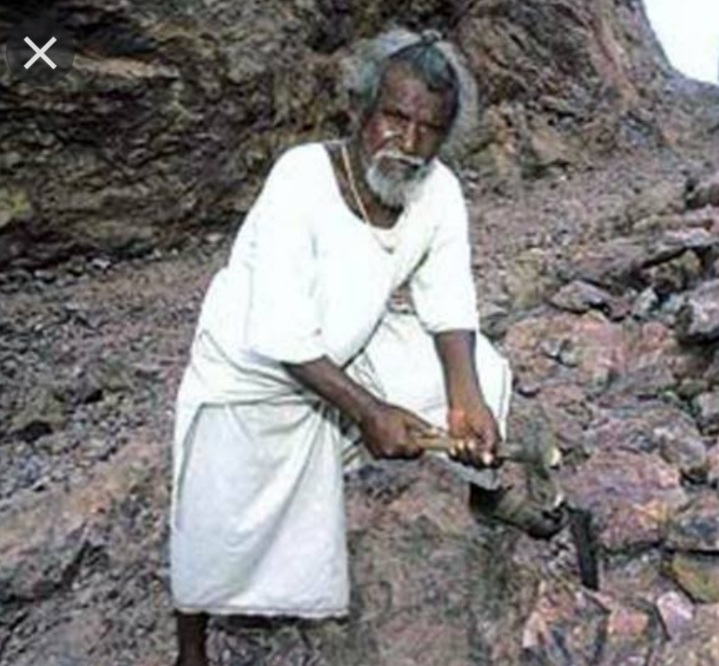Dashrath Das Manjhi better known as the Mountain Man was born in Gehlaur, Bihar in 1929 which then belonged to British India. Dashrath was born to a Bhuiya family, ranked lowest in Indian caste system. Their usual occupation is agriculture. Gehlaur is a small village and has minimum resources and in case they wanted anything they had to travel 55 kms around the mountain to Wazirganj for purchasing any necessities.
Dashrath’s parents got him married in his childhood and he eloped from his marriage and went to Dhanbad, worked in a coal mine for 7 years and later went back to his village and took up agriculture work. When he went back he fell in love with Falguni Devi, the girl to whom he had married 7 years ago. But Falguni’s father refused to send her to their house as Dashrath had no job at that time.
Later they managed to convince them and they lived together. Once when Dashrath had gone to the other side of the mountain to cut down wood, in the late afternoon Falguni Devi left home to give him lunch. But before she could reach Dashrath, she fell off from the mountains, since Gehlaur had no medical facilities, this became the reason for Falguni’s death.
Dashrath on becoming a widower felt very lonely and wanted to do something for the society so nobody else would go through what he had been through. So he decided to cut the mountain in between and make a path that directly leads to Wazirganj. People started talking that Dashrath had become mentally unstable after his wife’s death. But Dashrath never took their words seriously and with the help of a hammer and a chisel he managed to cut the entire mountain.
Dashrath at that time was doing agriculture work so he managed to do both the work. The entire day he would work on the fields and in the early morning and in the evening he would cut down the mountain. He had two children and had to also look after them. Dashrath loved his wife so much that he did not want anybody else to lose their beloved ones.
There was a time when Gehlaur was facing drought and the villagers had to leave that place as they were dying with no food and water. Similarly Dashrath’s family too decided to leave the village and settle in the city. But Dashrath refused to leave his work and stayed alone in his village. Due to the drought situation he had to drink dirty water and feed on leaves. Once the situation was better in the village all his friends and family returned to the village.
Since he was making a big sacrifice of his life for the village he was well recognised by the politicians of that time. The village head wanted to take advantage of this and sent Dashrath to Delhi for raising funds for their village so that they could lead Gehlaur towards the path of development. Dashrath being a landless labourer had no money even to travel in the train. He was pushed out of the train by the collector and later walked to Delhi but only disappointment was waiting for after such a long journey. The police officers did not even let him inside the office and pushed him away. He could not achieve his goals in the Capital city but Bihar’s CM recalls this incident and praises him for his determination.
It took him 22 long years to fulfil the wish and desire he had, to do something for his village with just a hammer and a chisel Dashrath Manjhi managed to cut the huge mountain into two. He had reduced 55 kms to 110 m. People who had thought he was mentally unstable, were now thanking the same person for such a big sacrifice and gift to their village. They all could get the facilities that they were deprived of and it was Dashrath’s belief that nobody else in his village must face the situation as same as his.
Dashrath died at the age of 73 fighting gallbladder cancer at AIIMS, Delhi in 2007. After his death the Bihar Government gave him a state funeral in his village and his body was wrapped in the Indian flag. A building at AIIMS was named after him in his memory and the path created by him was also recognised and made better for travelling. Dashrath’s biography is included in the textbooks to teach children about his determination and passion for the work he had started.

